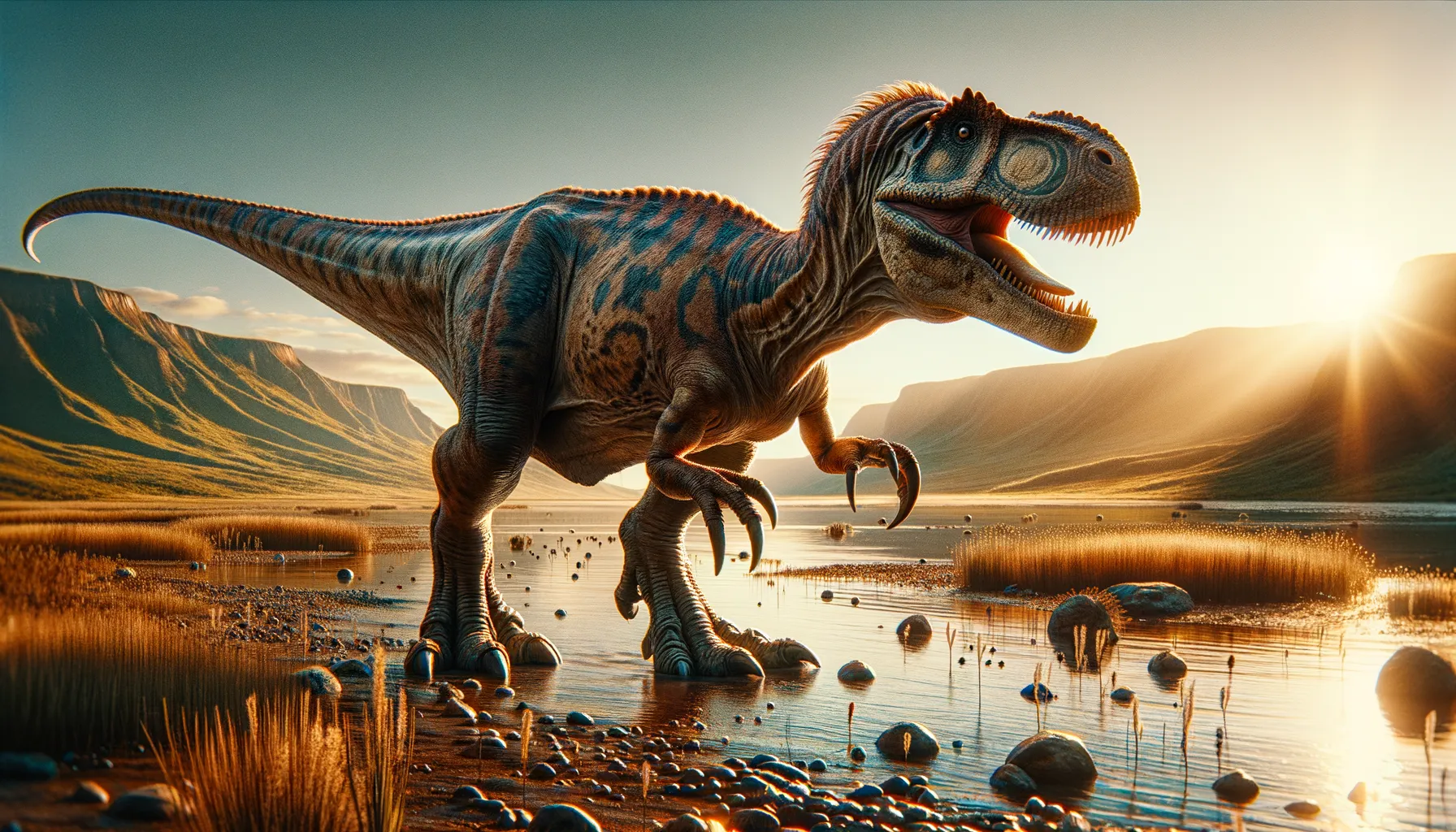
Dryptosaurus
Ancient predator of North American forests.
Period
Cretaceous
Length
Approximately 7.5 meters long.
Height
Estimated at about 2.5 meters tall.
Weight
Around 1,000 kilograms.
Dryptosaurus was a carnivorous dinosaur that lived around 67 million years ago during the Late Cretaceous period. Known for its unique claw-bearing hands, this large theropod moved primarily on two legs. It is considered one of the earlier large predators in North America and showcases features that were precursors to more advanced carnivorous dinosaurs. Its discovery has helped paleontologists understand the evolution of predatory dinosaurs in the region.
Diet
Dryptosaurus was a carnivore that fed on smaller dinosaurs and potentially scavenged from larger carcasses. Its sharp teeth and claws were well-adapted for slicing through meat.
Hunting
Dryptosaurus likely used its speed and agility to ambush prey, using its long legs and powerful claws to capture its meals. The sharp claws on its hands were important for gripping and subduing prey.
Environmental challenges
Dryptosaurus faced competition from other predatory dinosaurs of its time, requiring adaptations to maintain its position as an effective carnivore. Climate fluctuations could have affected its prey availability, necessitating a diverse hunting strategy. Additionally, volcanic activities and changing landscapes might have posed further challenges to its survival.
Speed
Moderate, estimated around 40 kilometers per hour.
Lifespan
Approximately 20 to 30 years.
First discovery
Discovered in New Jersey in 1866 by E.D. Cope.
Fun Facts
- Dryptosaurus was one of the first theropod dinosaurs discovered in North America, with its fossils found as early as 1866.
- It was originally named 'Laelaps,' but the name was later changed to 'Dryptosaurus' due to a naming conflict with a modern mite.
- Dryptosaurus means 'tearing lizard,' which reflects its sharp and powerful claws and teeth used for catching prey.
- This dinosaur lived approximately 67 million years ago during the late Cretaceous period.
- Dryptosaurus was a bipedal predator and could grow up to 25 feet long, making it a formidable hunter of its time.
- Unlike many of its relatives, Dryptosaurus had unusually large arms and claws for a theropod of its size.
- It is closely related to the more famous Tyrannosaurus rex, sharing many features but was smaller in size.
Growth and Development
From hatchling to adult, Dryptosaurus likely underwent significant changes in size and behavior. Juveniles may have relied more on speed, while adults used strength. Its growth rate might have varied depending on environmental conditions, with faster growth during periods of abundant resources.
Habitat
Dryptosaurus inhabited woodland environments, where it had access to various prey species. The mix of open spaces and wooded areas facilitated its ambush hunting style. Its environment likely included rivers and floodplains, providing a rich ecosystem with diverse food sources.
Interaction with other species
In its habitat, Dryptosaurus shared territory with both prey and competing predators. Its interactions would have included competition for food and potential conflict with other carnivores. Symbiotic relationships might have formed with scavengers that cleaned up after its meals.
Natural lifespan
Dryptosaurus had a natural lifespan ranging from 20 to 30 years.
Reproduction
Dryptosaurus likely laid eggs, possibly in nests, similar to modern birds and reptiles. Parental care might have been limited post-hatching, with juveniles quickly becoming independent. Seasonal reproductive cycles could have been influenced by environmental factors like climate and food availability.
Social behaviour
Dryptosaurus was likely solitary or lived in small groups, akin to many large predators today. It might have communicated through vocalizations or body language, especially during mating seasons. Territorial displays could have involved physical posturing to deter rivals.
Fossil locations
Fossil evidence of Dryptosaurus has been primarily found in the eastern United States, particularly in New Jersey. These discoveries have provided important insights into theropods from the Cretaceous period in North America. Other fossils in nearby regions suggest a wider distribution during its era.
